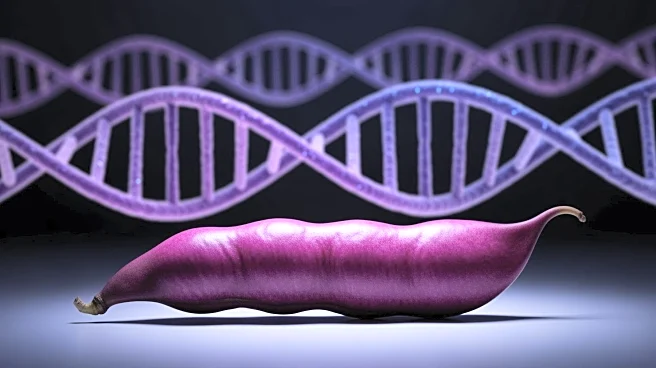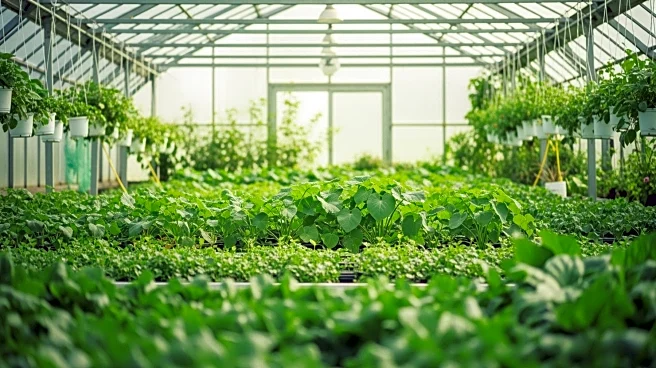What's Happening?
Researchers have successfully completed a telomere-to-telomere (T2T) genome assembly of Lablab purpureus cv. Linghu, a plant species cultivated at the Yangdu Innovation Base of Zhejiang Academy of Agricultural Sciences. The assembly process involved multiple
sequencing technologies, including PacBio HiFi, Oxford Nanopore Technologies (ONT), and Hi-C scaffolding. The comprehensive sequencing efforts resulted in a high-quality genome assembly, resolving complex genomic regions and achieving near-chromosomal completeness. The assembly process included draft genome assembly, Hi-C-assisted scaffolding, gap filling, and error correction, ultimately producing a contiguous T2T genome. The genome was further annotated for centromeres, telomeres, and repetitive sequences, with a total of 29,280 protein-coding genes identified.
Why It's Important?
The completion of the Lablab purpureus genome assembly represents a significant advancement in plant genomics, providing a valuable resource for agricultural research and crop improvement. The high-quality genome assembly allows for a better understanding of the genetic basis of important traits, which can be leveraged to enhance crop yield, disease resistance, and environmental adaptability. This development is particularly relevant for regions that rely on Lablab purpureus as a food source, as it can lead to more resilient and productive cultivars. Additionally, the methodologies used in this assembly can be applied to other plant species, potentially accelerating genomic research and innovation in agriculture.
What's Next?
Future research will likely focus on utilizing the Lablab purpureus genome assembly to identify genes associated with desirable agricultural traits. Researchers may also explore the genetic diversity within Lablab purpureus cultivars to inform breeding programs. The assembly could serve as a reference for comparative genomics studies, aiding in the identification of evolutionary patterns and genetic variations across related species. Furthermore, the techniques and insights gained from this project may be applied to other crops, contributing to global food security and sustainable agriculture.
Beyond the Headlines
The successful assembly of the Lablab purpureus genome highlights the importance of integrating multiple sequencing technologies to overcome the challenges of complex genomic regions. This approach not only enhances the accuracy and completeness of genome assemblies but also sets a precedent for future genomic projects. The study underscores the potential of genomics to drive agricultural innovation, offering new tools and strategies for addressing the challenges of climate change, population growth, and food scarcity.













